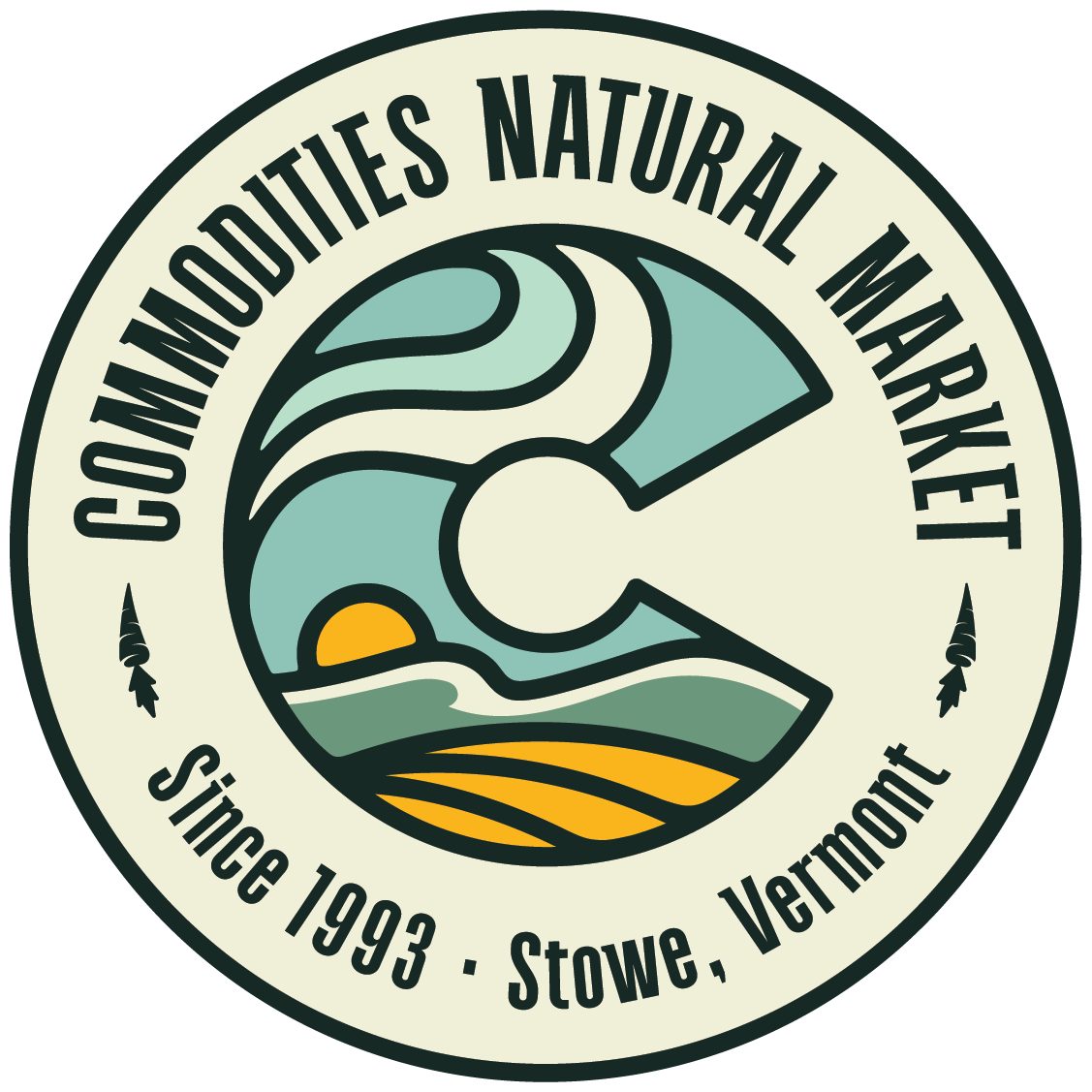Why Organic?
If you’re dedicated to eating local, Vermont ranked #1 for the past 4 years in a nationwide survey from Strolling of the Heifers, a nonprofit that advocates for access to local healthy food that, coincidentally (right?), is based in Vermont. The top 5 in order include Vermont, Maine, New Hampshire, Oregon, and Massachusetts.
Vermont boasts the highest percentage of people who buy locally grown food and has seen a surge in small farmers. The growing cost of food shipped from California and elsewhere, coupled with concern about America’s use of gasoline and an overall concern for food safety is spurring local agriculture, according to Organicconsumers.org.
Dairy farming remains the most important sector of the state’s agriculture and local food production is on the upswing.
It’s worth noting, and you’ll see us make note of this at Commodities Natural Market, that there are many small farms who practice organic but are not certified because the size of the farm in relation to the costs associated with certification are disproportional. We always inquire, before doing business with a new farm, dairy, creamery, or manufacturer as to what their practices and ingredients are or are not.
Ten reasons to eat organic
Reduce The Toxic Load: Keep Chemicals Out of the Air, Water, Soil and our Bodies
Buying organic food promotes a less toxic environment for all living things.
Reduce if Not Eliminate Off Farm Pollution
Industrial agriculture doesn’t singularly pollute farmland and farm workers; it also wreaks havoc on the environment downstream. Pesticide drift affects non-farm communities with odorless and invisible poisons.
Protect Future Generations
Our nation is now reaping the results of four generations of exposure to agricultural and industrial chemicals, whose safety was deemed on adult tolerance levels, not on children’s. According to the National Academy of Science, “neurologic and behavioral effects may result from low-level exposure to pesticides.” Numerous studies show that pesticides can adversely affect the nervous system, increase the risk of cancer, and decrease fertility.
Build Healthy Soil
Mono-cropping and chemical fertilizer dependency has taken a toll with a loss of topsoil estimated at a cost of $40 billion per year in the U.S., according to David Pimental of Cornell University. Add to this an equally disturbing loss of micronutrients and minerals in fruits and vegetables.
Taste Better and Truer Flavor
Scientists now know what we eaters have known all along organic food often tastes better. It makes sense that strawberries taste yummier when raised in harmony with nature, but researchers at Washington State University just proved this fact in lab taste trials where the organic berries were consistently judged as sweeter.
Assist Family Farmers of all Sizes
According to the Organic Farming Research Foundation, as of 2006, there are approximately 10,000 certified organic producers in the U.S. compared to 2500 to 3,000 tracked in 1994. Measured against the two million farms estimated in the U.S. today, organic is still tiny. Family farms that are certified organic farms have a double economic benefit: they are profitable and they farm in harmony with their surrounding environment.
Avoid Hasty and Poor Science in Your Food
Cloned food. GMOs and rBGH. Oh my! It is interesting how swiftly these food technologies were rushed to market when organic fought for 13 years to become a federal law. Eleven years ago, genetically modified food was not part of our food supply; today an astounding 30 percent of our cropland is planted with GMOs. Organic is the only de facto seal of reassurance against these and other modern, lab-produced additions to our food supply, and the only food term with built-in inspections and federal regulatory teeth.
Eating with a Sense of Place
Whether it is local fruit, imported coffee, or artisan cheese, organic can demonstrate a reverence for the land and its people. No matter the zip code, organic has proven to use less energy (on average, about 30 percent less), is beneficial to soil, water, and local habitat, and is safer for the people who harvest our food. Eat more seasonably by supporting your local farmers market while also supporting a global organic economy year-round.
Promote Biodiversity
Visit an organic farm and you’ll notice something: a buzz of animal, bird, and insect activity. These organic oases are thriving, diverse habitats. Native plants, birds, and hawks return usually after the first season of organic practices; beneficial insects allow for a greater balance, and indigenous animals find these farms a safe haven. As best said by Aldo Leopold, “A good farm must be one where the native flora and fauna have lost acreage without losing their existence.”
Celebrate the Culture of Agriculture
Food is a ‘language’ spoken in every culture. Making this language organic allows for an important cultural revolution whereby diversity and biodiversity are embraced and chemical toxins and environmental harm are radically reduced, if not eliminated. The simple act of saving one heirloom seed from extinction, for example, is an act of biological and cultural conservation. Organic is not necessarily the most efficient farming system in the short run. It is slower, harder, more complex, and more labor-intensive.
Reviews
We Love Our Customers

